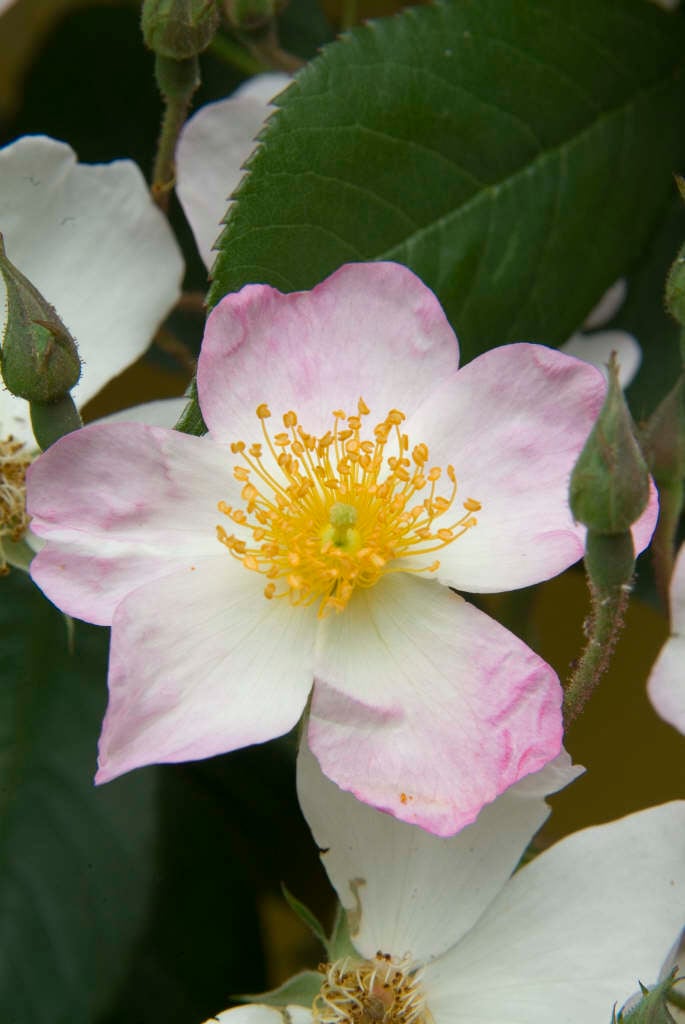Rosa 'Francis E. Lester' (HM/Ra)

rose 'Francis E. Lester'
Large, vigorous rambler rose about 4.5m tall, with coppery-tinted, dark green foliage. Pink buds open to large sprays of very fragrant, single, white blooms splashed pale pink on the edges of the petals, once-flowering in summer, followed by small red fruits (hips)
Size
Ultimate height
4–8 metresTime to ultimate height
5–10 yearsUltimate spread
2.5–4 metresGrowing conditions
Moisture
Moist but well–drained, Well–drainedpH
Acid, Alkaline, NeutralColour & scent
| Stem | Flower | Foliage | Fruit | |
| Spring | Green | |||
|---|---|---|---|---|
| Summer | Pink White | Green | ||
| Autumn | Green | Red | ||
| Winter |
Position
- Full sun
- Partial shade
Aspect
South–facing or West–facing or East–facing
Exposure
Exposed or Sheltered Hardiness
H6Botanical details
- Family
- Rosaceae
- Native to GB / Ireland
- No
- Foliage
- Deciduous
- Habit
- Climbing
- Potentially harmful
- Fruit are ornamental - not to be eaten. Wear gloves and other protective equipment when handling. Pets: Fruit are ornamental - not to be eaten - see the HTA guide to potentially harmful plants for further information and useful contact numbers
- Genus
Rosa can be deciduous or semi-evergreen shrubs or scrambling climbers, with usually thorny stems bearing compound pinnate leaves and solitary or clustered flowers. Flowers may be followed by showy red or purple fruits in some varieties.
- Name status
Accepted
- Horticultural Group
- Hybrid Musk roses are vigorous shrubs with long, arching stems bearing glossy foliage, with large clusters of small fragrant double flowers in summer and autumn
How to grow
Cultivation
A rose for plenty of space, grow in full sun with fertile, humus-rich, moist but well-drained soil. Vigorous rambler suitable for growing into trees. Tolerates poor soil, shade and a north aspect, suited for climbing into trees - rose cultivation
Propagation
Propagate by budding in summer, hardwood cuttings in autumn, chip budding, semi-ripe cuttings in late summer or by layering.
Suggested planting locations and garden types
- Cottage and informal garden
- Wildlife gardens
- Wall side borders
Pruning
Pruning group 18 (rambler roses) don't prune after flowering if fruits (hips) are required
Pests
May be susceptible to aphids, rose leafhopper, glasshouse red spider mite, scale insects, caterpillars, large rose sawfly and rose leaf-rolling sawfly; rabbits and deer can cause damage
Diseases
May be susceptible to rose black spot, rose rust and rose powdery mildew
Get involved
The Royal Horticultural Society is the UK’s leading gardening charity. We aim to enrich everyone’s life through plants, and make the UK a greener and more beautiful place.
